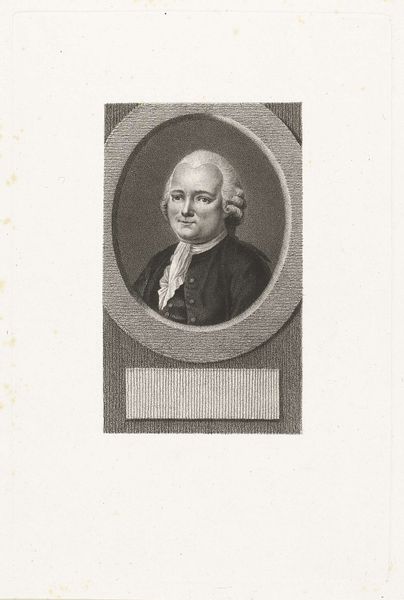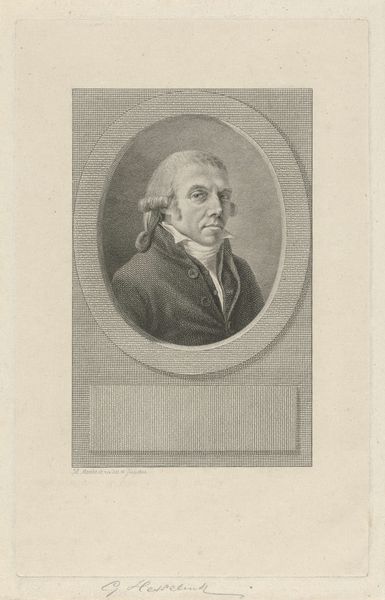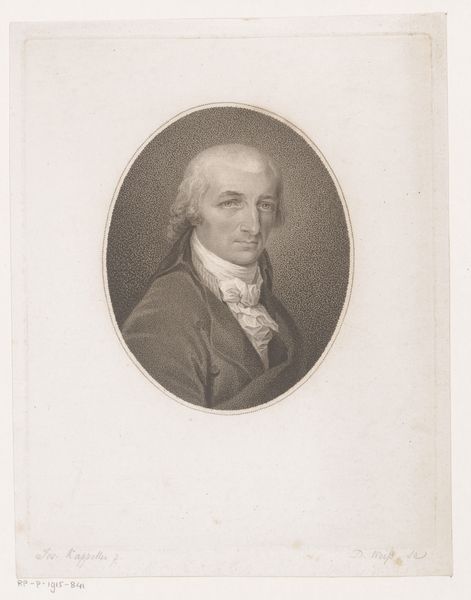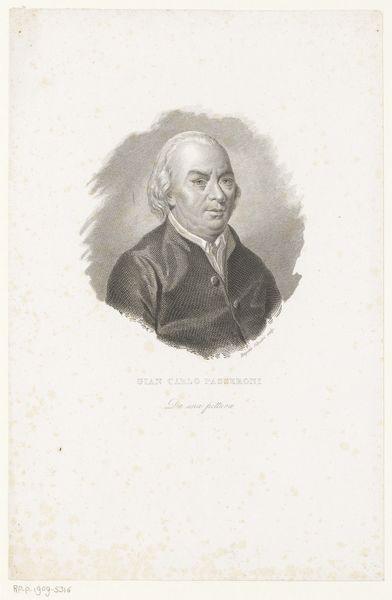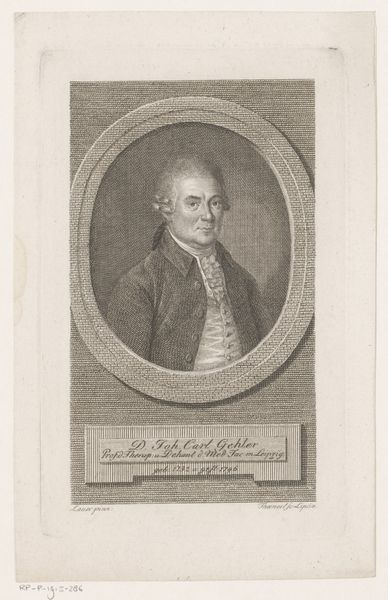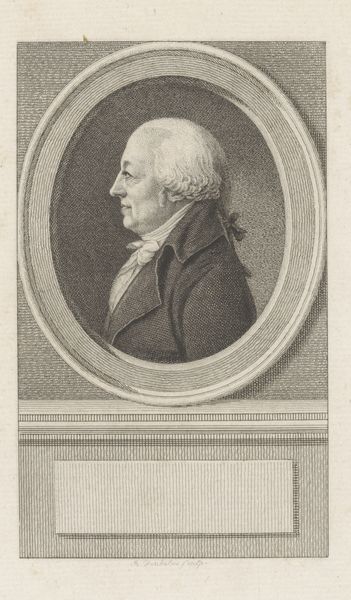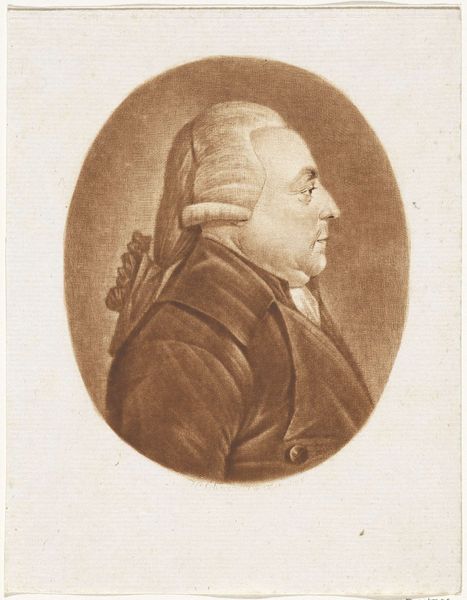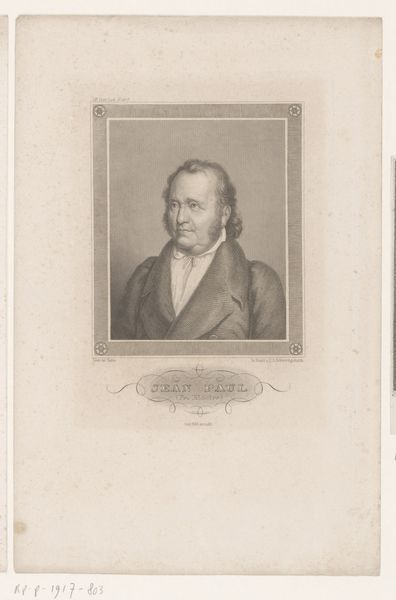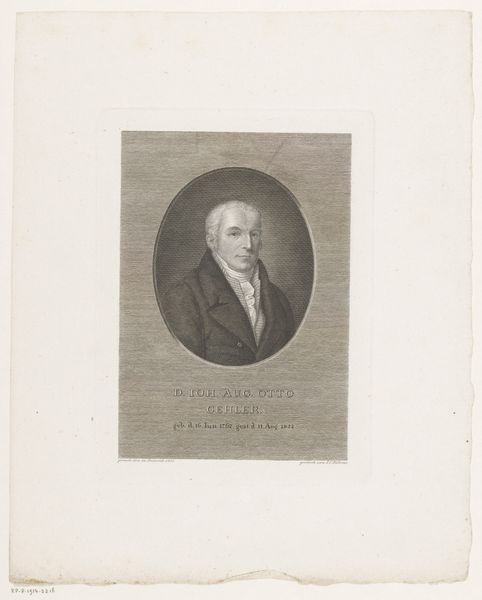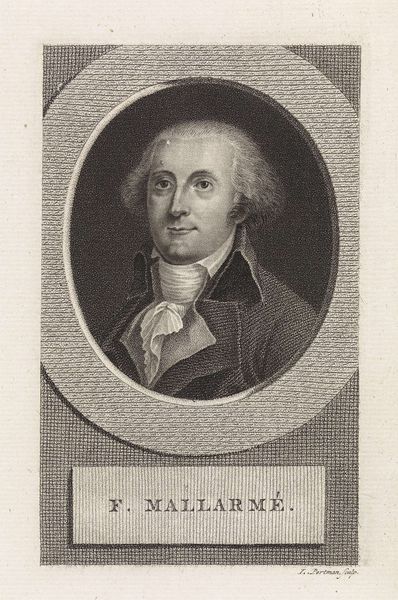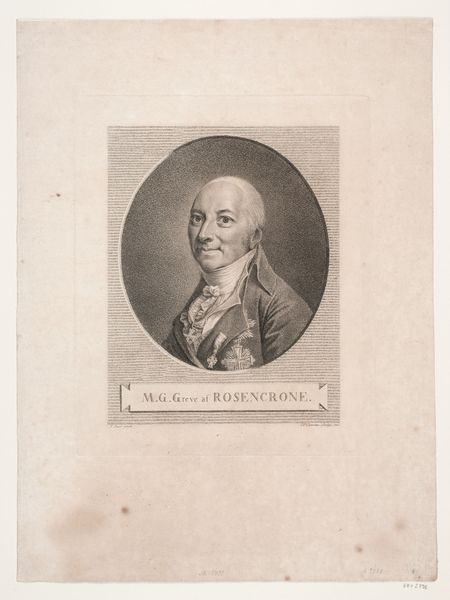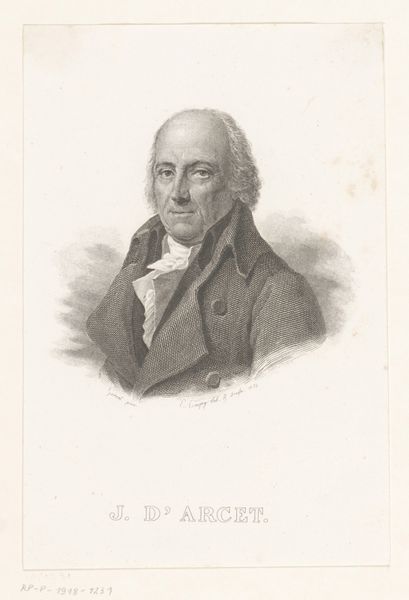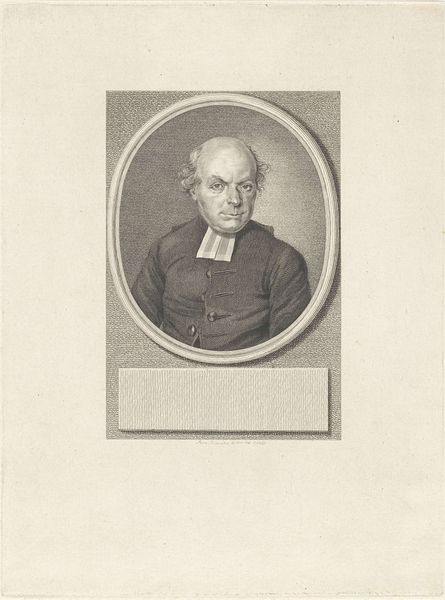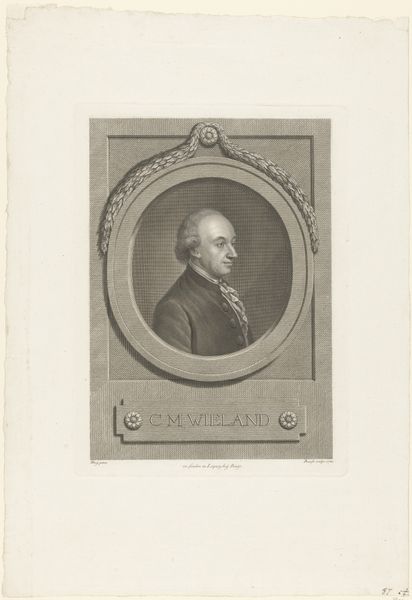
print, engraving
#
portrait
#
16_19th-century
# print
#
old engraving style
#
portrait reference
#
19th century
#
history-painting
#
engraving
Dimensions: height 124 mm, width 105 mm
Copyright: Rijks Museum: Open Domain
Curator: This image strikes me as intensely formal and restrained. The monochromatic palette and severe profile evoke a powerful sense of detachment. Editor: Indeed. What we are looking at is entitled “Portret van Jan van der Roest.” It’s an engraving created between 1779 and 1816 by Reinier Vinkeles. You can find it in the collection of the Rijksmuseum. Curator: The choice of profile is particularly interesting. It creates a distance, almost a sense of judgment, offering very little emotional access to the sitter. It also emphasizes the man's prominent nose, maybe intentionally to point out a family trait or some personal character. Editor: Perhaps. Profile portraits in the late 18th and early 19th centuries were, to some degree, a conscious reference to classical antiquity, to Roman portraiture. This lends a certain gravitas and timelessness to the sitter. Do you think Vinkeles aimed for that sort of historical weight? Curator: Definitely. The style, emulating older engraving traditions, creates that allusion. The oval border around the portrait mimics ancient medallions, imbuing Van der Roest with the stoicism associated with classical figures. The gaze is directed forward, an aspiration to progress. But the question is: What idea of progress does it convey? Editor: That’s a good point. Given the political and social upheavals of that period, especially the French Revolution, representing someone in a classical style was more than an artistic choice. It signaled an allegiance to specific cultural values, to a certain vision of order. Vinkeles was a prolific engraver, so these choices probably reflected his values as well. Curator: Agreed. I find myself wondering who Jan van der Roest was, to have merited such an august representation, as if his very image were a testament to enduring virtue, an echo of past grandeur intended to legitimize a rapidly changing present. It tells us not just about him, but the values his community hoped to uphold through visual representation. Editor: This engraving then speaks volumes about the societal forces at play during its creation. It highlights how even the most seemingly straightforward portrait engages with the broader public dialogue about tradition and modernity. Curator: Precisely. An image reflecting a society at a specific place and time. Editor: Indeed. A snapshot that continues to echo into our present.
Comments
No comments
Be the first to comment and join the conversation on the ultimate creative platform.
